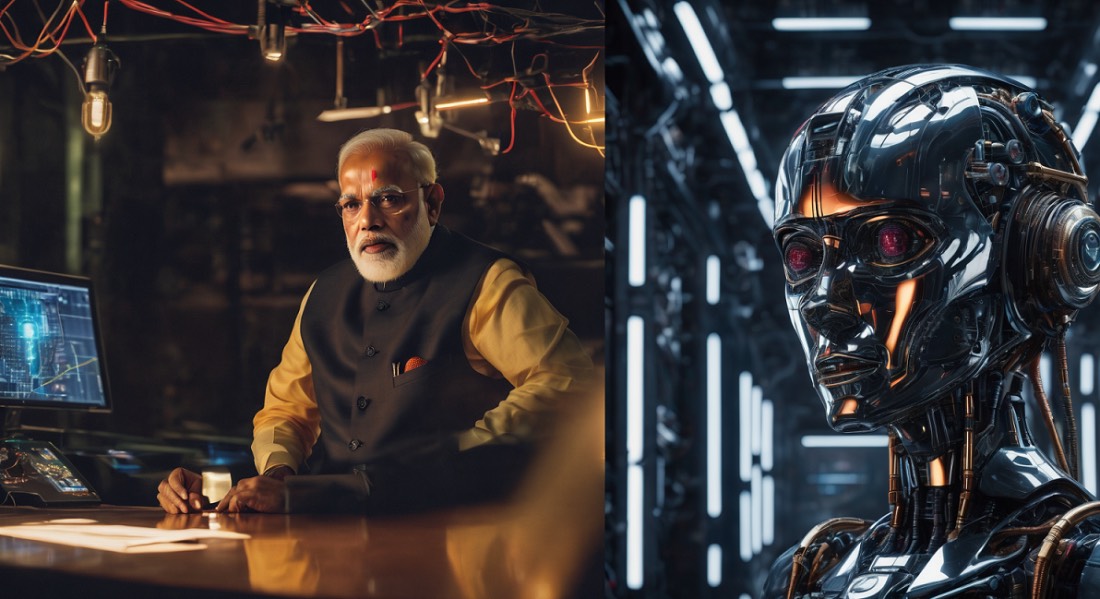
In a recent address, Prime Minister Narendra Modi expressed concern over the growing prevalence of deepfake videos, particularly those targeting public figures like himself. He highlighted the potential misuse of artificial intelligence (AI) to spread misinformation and sow discord, calling it a "new age threat" to society.
Modi's remarks came in response to a deepfake video that circulated online, featuring his face superimposed on another person's body making controversial statements. The video sparked outrage and raised concerns about the potential for deepfakes to be used to manipulate public opinion and undermine trust in institutions.
PM Modi says ‘#Deepfake’ is a big challenge, calls for need to educate people about AI & deepfake ?#deepfake pic.twitter.com/mejgubL4yf
— Radhika Chaudhary (@Radhika8057) November 17, 2023
"The misuse of AI for creating deepfakes is a serious concern," Modi stated. "It is important to remember that AI is a powerful tool that can be used for both good and evil. It is up to us to ensure that it is used responsibly and ethically."
Modi also urged the media and social media platforms to take a more proactive role in identifying and removing deepfake content. He called for greater awareness among the public about the potential dangers of deepfakes and encouraged people to be critical consumers of online information.
Experts in AI and technology have echoed Modi's concerns, warning that deepfakes pose a significant threat to democracy and social stability. They have called for the development of robust detection and mitigation strategies to combat the spread of deepfakes.
The Rise of Deepfakes
Deepfakes are videos or audio recordings that have been manipulated using AI to make it appear as if someone is saying or doing something they never did. They are created using a technique called deep learning, which allows AI algorithms to learn from vast amounts of data to generate realistic simulations of human speech and appearance.
Deepfakes have the potential to be used for a variety of malicious purposes, including spreading misinformation, damaging reputations, and undermining trust in institutions. They can also be used to create fake news stories that can influence public opinion and even sway elections.
The Dark Side of AI
The emergence of deepfakes highlights the need for a more nuanced understanding of AI and its potential impacts. While AI has the potential to revolutionize many aspects of our lives, it is crucial to recognize and address the potential risks associated with its misuse. As Modi aptly noted, it is our responsibility to ensure that AI is used responsibly and ethically for the benefit of society.
What Can Be Done?
There are a number of things that can be done to address the threat of deepfakes. First, it is important to develop robust detection and mitigation strategies. This includes developing AI algorithms that can identify deepfakes, as well as educating the public about the dangers of deepfakes and how to spot them.
Second, it is important to hold the creators of deepfakes accountable for their actions. This may involve passing new laws or regulations that make it illegal to create or distribute deepfakes.
Finally, it is important to promote responsible AI development. This includes encouraging AI developers to consider the potential ethical implications of their work and to develop safeguards to prevent the misuse of AI.
The misuse of AI for creating deepfakes is a serious problem that poses a significant threat to our society. It is important to take action to address this threat and ensure that AI is used responsibly and ethically.
In addition to the points raised in the article, I would also like to add that it is important to remember that deepfakes are a relatively new technology. As such, there is still much that we don't know about them and their potential impacts. It is therefore important to continue to research and study deepfakes so that we can better understand and address the risks they pose.
I would also like to emphasize the importance of education and awareness in combating deepfakes. It is important to educate the public about the dangers of deepfakes and how to identify them. We also need to be aware of the potential for deepfakes to be used to manipulate public opinion and undermine trust in institutions.
Finally, I would like to reiterate the importance of responsible AI development. AI is a powerful tool that can be used for both good and evil. It is up to us to ensure that it is used responsibly and ethically for the benefit of society.